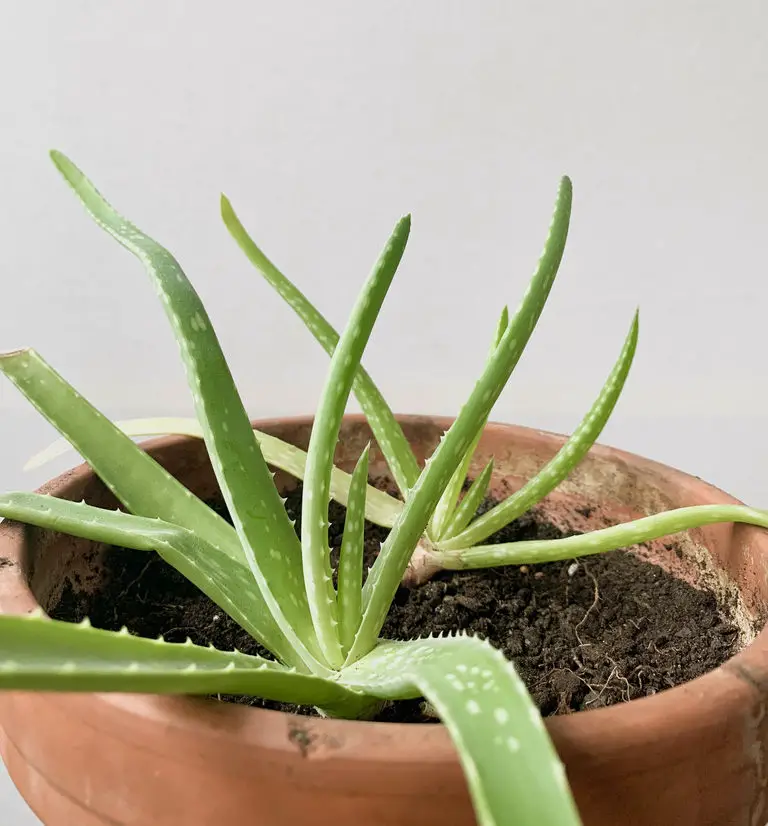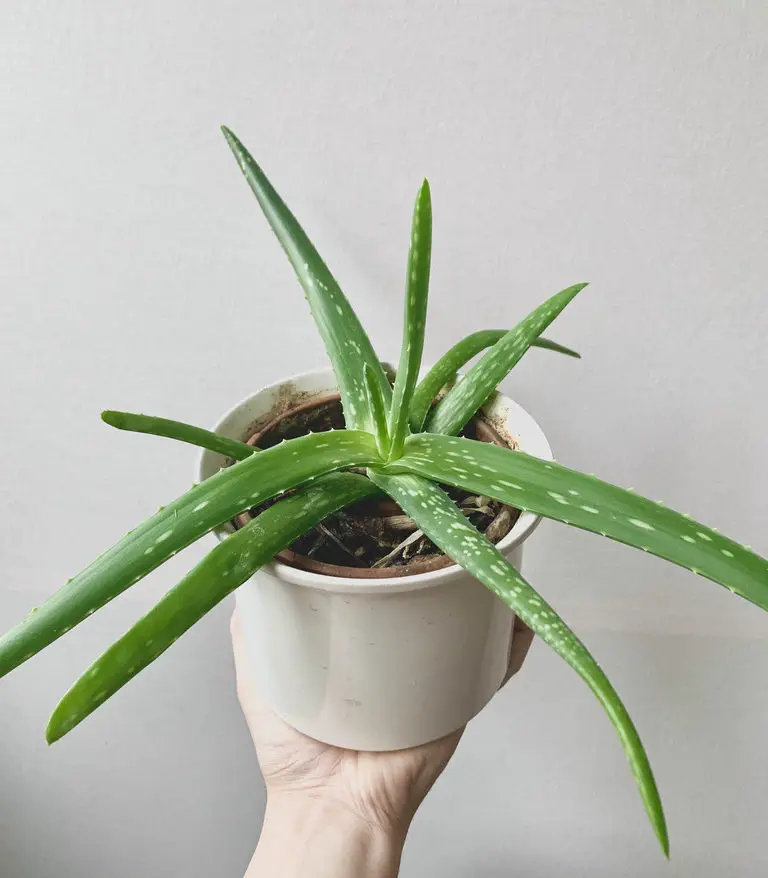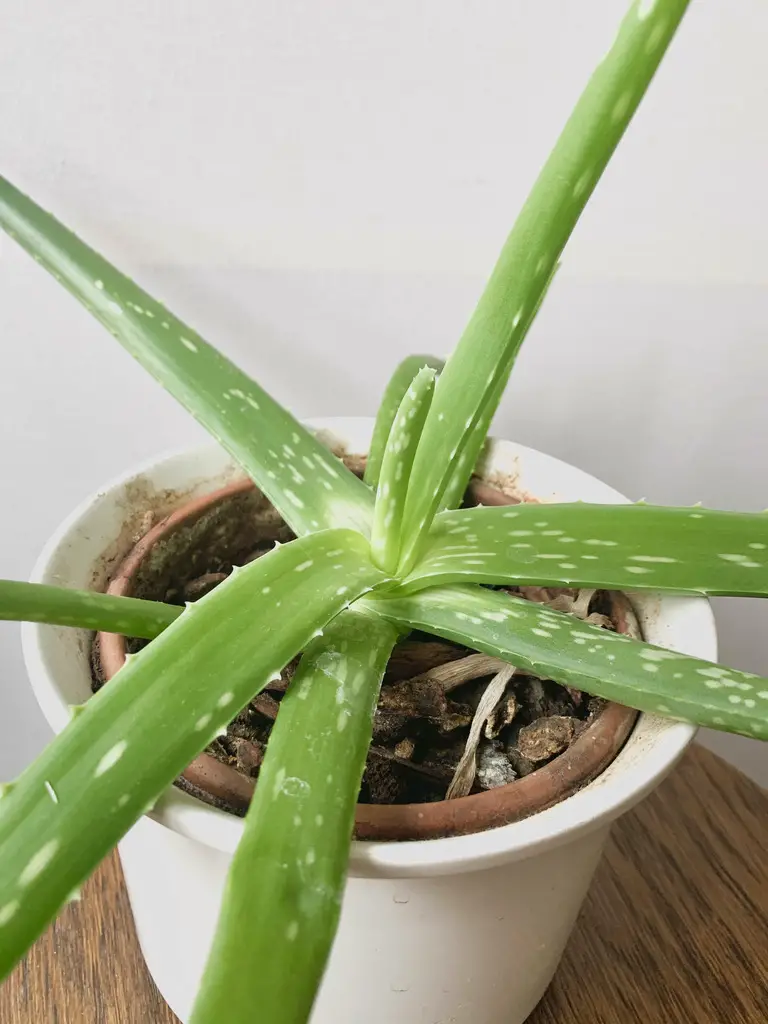
Aloe Vera
Botanical Name: Aloe Barbandensis
Common Name: Aloe, Aloe Vera, Burn Plant, True Aloe
Family: Asphodelaceae
About Aloe Vera
Out of the hundreds of Aloe types, Aloe Vera is the most common and popular of the family. Native to northern Africa and the middle east the succulent plants are used to a hot, arid climate. Making them ideal for areas with low humidity. Their fleshy, green, sharp foliage make them a standout plant to add to your collection. It is also a great plant for anyone interested in plants for medicinal purposes.
Aloe Vera has been used for hundreds of years to treat burns, dry skin, and sunburns. The gel inside their fleshy foliage can also be eaten or mixed into an Aloe juice for consumption. Consuming Aloe Vera gel is hydrating and has been known to help with various skin conditions whether applied topically or consumed orally.

Light
Indoors, Aloe Vera should get as much sun as possible. Shoot for four or more hours of direct sunlight per day. Ideally, your Aloe will sit in a south or west-facing window without obstructions outside or curtains to filter the sun. If you don’t have a spot with direct sun choose the brightest spot available, Aloe can survive with bright indirect light but will grow slower and be more prone to root rot and other problems caused by overwatering.
If you live in a climate that allows your Aloe to live outdoors part of the year, it’s important to acclimate them to the outdoor sun slowly. Indoors, the suns rays are filtered through windows, making them less intense. If an Aloe goes straight from indoors to full sun outside it faces the risk of burned foliage. Start by placing your Aloe in a partially shaded spot and slowly increase its exposure to direct sun. When outdoors it’s best to provide some protection from the hot midday sun.
Water
In their natural habitat, Aloe Vera stores water to survive long periods of drought. Their fleshy leaves are ideal for storing enough water to sustain them for multiple weeks. It is best to water sparingly, a thorough drenching every two to three weeks is plenty. If your Aloe is in a lower light spot even less frequent watering is required.
It’s important to provide your Aloe with a fast-draining medium that doesn’t retain moisture for too long. In the winter months cut back on watering, in contrast when an Aloe is outside in the direct sun during the summer months weekly watering may be necessary. The leaves on your Aloe will begin to thin out and may become droopy (but not discolored) if they are suffering from too little water. It’s also recommended to empty your plants’ water tray if it hasn’t soaked the standing water within about 20 minutes.

Humidity & Temperature
Aloe is extremely adaptable to various/lower humidity levels. They will grow sturdy in a home with lower humidity levels. Coming from arid climates these plants are used to low humidity and little water. Where other plants may get brown tips and crispy leaves, Aloe will thrive (higher humidity levels are also tolerated).
Temperatures in the range of 50 to 90 degrees Fahrenheit are perfect. In the summer months when outdoors they can also withstand higher temperatures if shielded from the midday sun.
Aloe is hardy to around freezing (32 F) but growth will be considerably impaired by temps below 50 degrees. It is best to return your plant indoors once the weather begins to shift to below 50 degrees.
Toxicity
According to ASPCA Aloe Vera are toxic to both cats and dogs. Causing a mild to medium reaction if consumed. Watch for vomiting, lethargy, or a change in urine color if your pet has eaten part of an Aloe. If you notice any of these symptoms contact your veterinarian immediately.
For humans, the plant is non-toxic and is known for its helpful medicinal properties.

Tips
Number one tip: DO NOT OVERWATER! If you notice any mushy spots or yellowing spots on your Aloe it is most likely due to overwatering. Check your soil moisture levels and allow your plant to completely dry out to see if the damage is reversible.
To avoid overwatering issues it is best to use sandy soil, adding perlite, bark, or pumice will also create a faster draining medium ideal for Aloe. You can buy premixed succulent soils at most plant retailers or hardware stores. Additionally, you can use regular potting soil and add sand, perlite, or lecca to aid in drainage. When choosing a pot, untreated terra cotta with sufficient drainage holes are the best option.
When using the plant for medicinal purposes, it’s best to cut the leaves from the bottom of your Aloe as these will fall off naturally in time anyway. Aloe does not regrow leaves that have been cut but rather replaces them by producing new foliage from the top of the plant.
Frequently asked questions
Why is my Aloe limp/yellowing?
The most common cause for yellowing, limp leaves is overwatering. If you notice mushy spots on the foliage as well, it is almost certainly due to waterlogged soil. Check the moisture level of your plant and let it dry out completely. Let the pot stand dry for about one to two weeks before attempting to water it again.
Alternatively, if you check the roots and they are completely rotted, it may be better to chop the healthiest part of your aloe at the top and try to propagate it. You can do this by cutting the stem with a sharp knife. After cutting the stem set it to dry and callous for one to two days. After it has calloused over you can plant the chopped aloe in a well-draining soil. Water it about once a week until roots have formed, thereafter every three weeks will do.
How fast does Aloe Vera grow?
Given the bright direct sun Aloe is a vigorous grower. They can easily double their size in a year. In indirect or lower lighting conditions your Aloe may seem to grow at a sluggish pace. If you want a faster-growing Aloe give it as much light as possible.
What is the best soil for Aloe Vera?
The most important factor for Aloe Vera soil is fast drainage, avoid potting mixes that retain moisture. Pick a pre-mixed succulent soil that is sandy and porous. If you want to use a regular potting mix I recommend mixing about half soil with half sand/perlite/pumice to achieve an airy, well-draining mix that will be ideal for your Aloe to thrive in.
